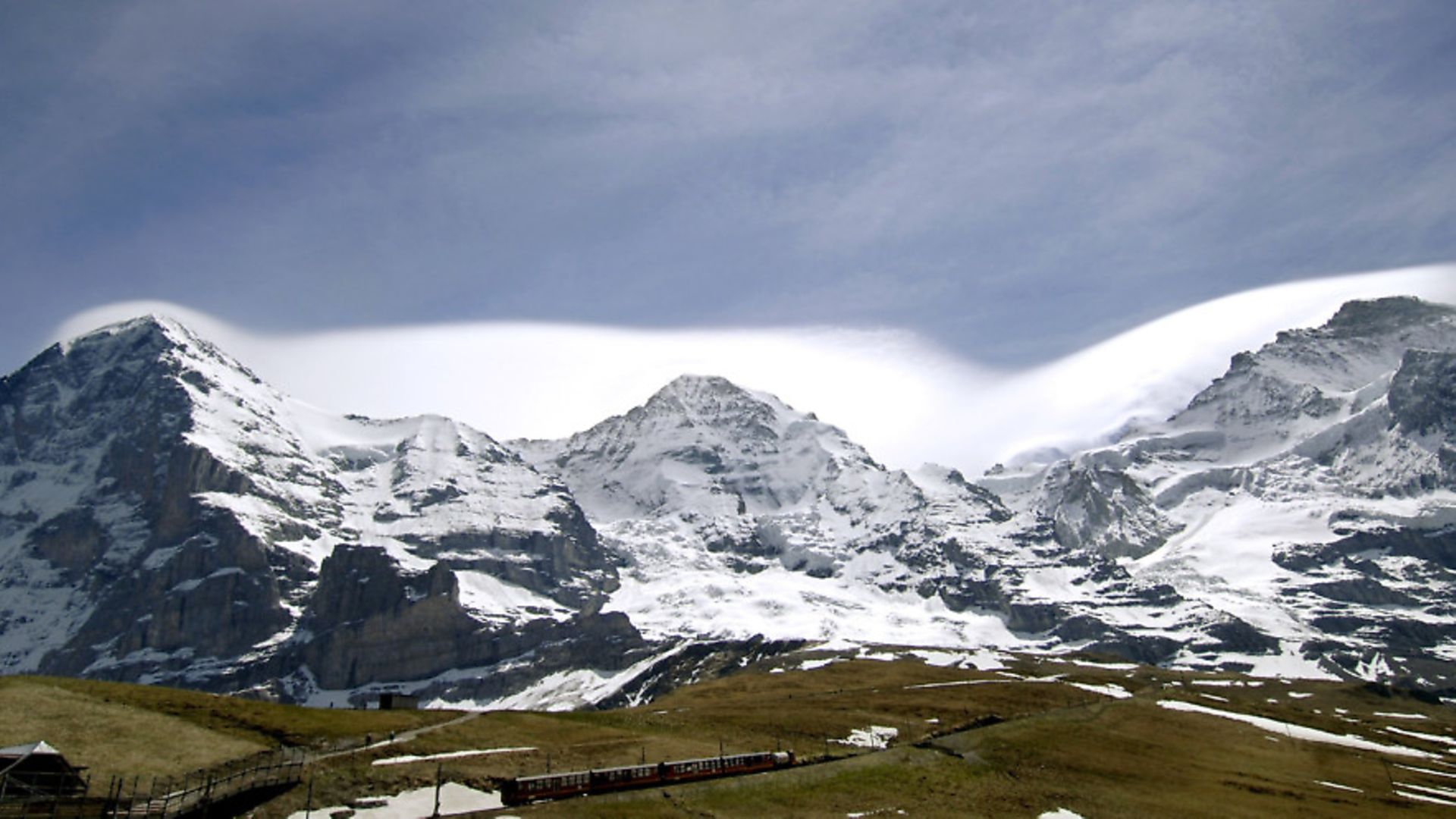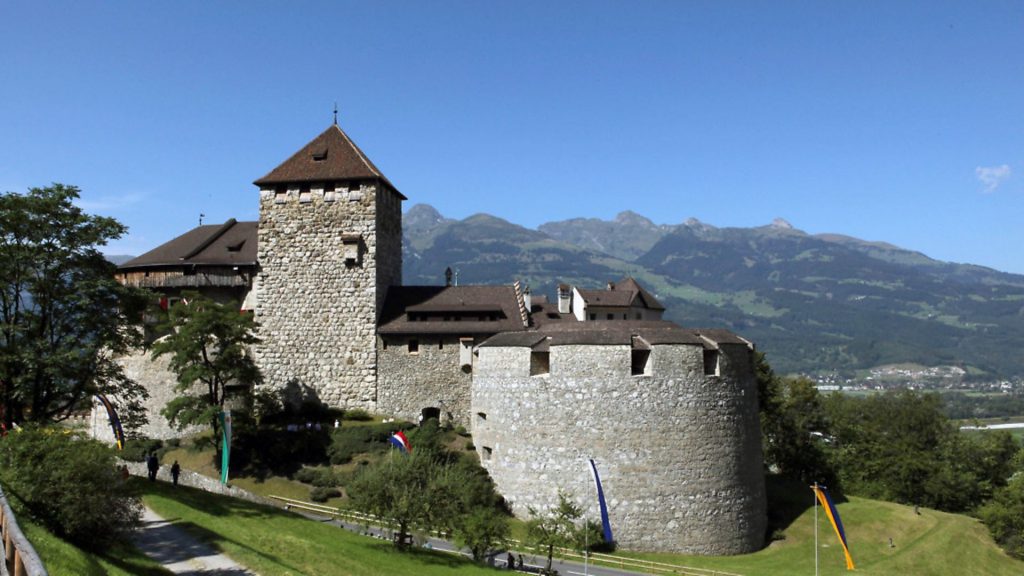
The wind has no respect for borders, politics or humans. Here literary correspondent CHARLIE CONNELLY tracks one author’s trek across Europe in search of gales, breezes and hurricanes

Robert FitzRoy, destined to be remembered as Charles Darwin’s captain on the Beagle rather than the greatest figure in the history of British meteorology, published The Weather Book in 1863, arguably the most significant volume on the subject since Aristotle’s Meteorologica 2,000 years earlier.
In it he wrote of how, ‘air presses on everything within about forty miles of the world’s surface, like a much lighter ocean, at the bottom of which we live – not feeling its weight because our bodies are full of air, but feeling its currents: the winds’.
The wind can be a reassuring presence. It ruffles our hair, booms in our ears and playfully whips hats from our heads. It’s enabled centuries of exploration and navigation; wind-assisted movements that have helped to further the progress of humanity. Online you can even find a live global wind map, a beautiful mass of swirls and curls in perpetual, hypnotic motion, linking nations and oceans through the movement of the air.
The wind can also be ruinous and vindictive. We’re fortunate enough in Britain to escape hurricanes and tornadoes but most of us have experience of wind damage, whether it be fences flattened, trees uprooted or dustbins retrieved from halfway up the street.
The wind can also, in certain circumstances, send us a bit doolally. Voltaire, for example, was convinced of the potentially damaging propensities of a constant wind to the human mind. ‘This east wind is responsible for many cases of suicide,’ he wrote of the gusts bustling into London from the Thames estuary. ‘This wind is the ruin of our island. Everyone wears a grim expression and is inclined to make desperate decisions. It was literally in an east wind that Charles I was beheaded and James II deposed.’
Much earlier Hippocrates, the father of medicine, was also convinced of the wind’s detrimental effect on human health. ‘In towns frequently exposed to winds,’ he wrote, ‘the slightest cause can turn sores into ulcers. The inhabitants lack force and vigour, the women are sickly and barren, the children are attacked with convulsions or sacral disease and the men are subject to dysentery and long fevers in the winter.’
Things can get so bad in Switzerland when the Föhn is blowing there are stories of operations being cancelled due to a heightened risk of bleeding out and thrombosis.
Nick Hunt, the author of Where The Wild Winds Are: Walking Europe’s Winds From The Pennines To Provence (Nicholas Brealey Publishing, (£25.95), is clearly a very brave man. He’s risked physical and mental degradation in setting out deliberately on the trail of some of our continent’s fiercest and most notorious winds: an ingenious idea that he carries off with panache and aplomb.
Other than the localised Cumbrian Helm wind, in search of which Hunt opens the book, we in Britain and Ireland are not blessed (or, if you prefer, cursed) with the kind of regular, specific winds that form the core of his narrative. Continental Europe has plenty, most of which retain curious names handed down by history: the Haizbeltza, or ‘black wind’ of the Basque Country, the Leste, a hot easterly in the Canary Islands and the scorching, dry Xlokk of Malta to name but three.
Indeed Europe, with its rippling topography adjacent to seas that are relatively warm, is a tumultuous nest of such winds that rampage invisibly around the continent on frequently malevolent business, from the burning of Alpine villages to an increased incidence of migraines. In Switzerland people talk of how the hot, dry Föhn has practically cooked apples on the trees and only last month the Mistral fanned forest fires in Provence leading to the evacuation of around 12,000 people from their homes and campsites.
The Föhn and the Mistral are two of the winds Hunt chases across Europe; the Helm and the Bora completing a quartet of fast-moving air that whips between pockets of high and low pressure in an endless search for, as Hunt says, equilibrium.
Much of the book, particularly in its first half, is spent waiting for winds which mischievously refuse to comply with the author’s quest. Fortunately Hunt is suitably engaging company and a terrific guide, able to occupy our downtime in the doldrums with fascinating explorations of localities as well as throwing out golden nuggets of information (I never knew that the sound of wind in the trees has a name – psithurism – nor that the word ‘window’ derives from vindauga, from old Norse meaning ‘wind eye’). Hunt is also an extremely gifted writer: his previous book traced Patrick Leigh Fermor’s 1930s walk across Europe as documented in A Time Of Gifts and Between The Woods And The Water and his writing here has agreeable echoes of Leigh Fermor’s evocative prose.
Arriving one evening in Long Marton in the north west of England, for example, on the trail of the Helm wind, he writes of how, ‘woodsmoke was rising from red sandstone cottages, October leaves dropped from the trees, and a raucousness of crows was settling in the branches’, and later, in the Swiss mountains, he describes how ‘gangs of heavily armoured skiers lumbered through the streets like an occupying army’.
From the medieval legend of William Tell to the Balkan wars of the 1990s, the winds also facilitate Hunt’s intelligent summaries of slabs of European history pertinent to the places through which he passes, not to mention the undercurrents of racism that pervade our continent: he encounters anti-refugee rhetoric from characters as diverse as a Balkan war veteran in Slovenia and a mumsy guesthouse owner in a postcard-perfect part of Switzerland.
Hunt veers close to worthiness at times: he’s sniffy about Liechtenstein’s tax haven status and a little snooty about a tourist hotel in which he stays in Heidi country, as well as describing how nearby souvenir cowbells and restaurant menus in English, Korean and Japanese ‘ruined’ the experience of seeing the triple peaks of the Eiger, Mönch and Jungfrau, but for the latter at least he was suffering wind-weariness from the relentless Föhn so we can perhaps forgive the odd dose of the grumps.
When we’ve waited so long to experience the winds, when they do arrive one fears anti-climax. After all, describing a strong, sustained wind, especially when it’s long-awaited, is quite a challenge for any writer. Fortunately Hunt has the chops.
‘Now that I had found the wind I had to follow it,’ he writes of the Föhn. ‘There was only one direction: blossom, leaves, litter, dust and plastic bags all chased north, and the clothes on washing lines had turned to weather vanes’. This use of the debris of the wind as natural compasses skilfully bypasses the danger of finding interesting variations on saying ‘it was, you know, really amazingly windy’.
For someone who clearly prefers his own company on his long walks Hunt is a gregarious and empathetic companion when he meets people, either through serendipity or previous arrangement.
‘In the wind people grow a thick skin,’ the owner of a Slovenian guesthouse in the teeth of the Bora tells him, while the keeper of the Bora museum in Trieste, where thick chains are bolted to the streets for pedestrians to hang on to when the wind really gets into its stride, tells Hunt, ‘wind is disorder. In this room I try to make order. It’s a crazy idea and I hope I never succeed’.
It’s this combination of destructive disorder and their quest for equilibrium that makes these winds so fascinating. They blow with no respect for borders or politics and the variety of people Hunt encounters across Europe are all united by an undercurrent of wind-wisdom. There’s a humility about them, the realisation that some things in this world are not to be mastered or even tamed by human activity.
There’s something comforting, even healthy about that. Equally there’s something comforting about how even with the most advanced technology in the world we still can’t predict the weather with complete accuracy. Some things are beyond our control and that can only be a good thing.
Where The Wild Winds Are is a valuable reminder of this, a fitting, respectful tribute to a phenomenon older than humanity itself. Some of these winds are hot, some bitterly cold, bringing migraines, palpitations, snow and dust, stealing moisture and immolating crops in a continent-wide dance of constantly moving air, but they all help to keep us humble.









